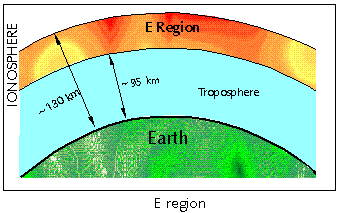Search Keyword By: E
E & M signaling
In telephony, an arrangement that uses separate leads, called the “E” lead and “M” lead, for signaling and supervisory purposes. Note 1: The near end signals the far end by applying -48 Vdc to the “M” lead, which results in a ground being applied to the far end’s “E” lead. When -48 Vdc is applied to the far end “M” lead, the near-end “E” lead is grounded. Note 2: The “E” originally stood for “ear,” i.e., when the near-end “E” lead was grounded, the far end was calling and “wanted your ear.” The “M” originally stood for “mouth,” because when the near-end wanted to call (i.e., speak to) the far end, -48 Vdc was applied to that lead.
E layer
See E region, ionosphere.
E region
That portion of the ionosphere existing between approximately 95 and 130 km above the surface of the Earth. Note: The E Region lies between the D and F regions. Synonyms Heaviside layer, Kennelly-Heaviside layer.

E-AC-3
Enhanced Dolby Audio Coding 3
E-ACR
Enhanced Automatic Carrier Routing
E-bend
A smooth change in the direction of the axis of a waveguide, throughout which the axis remains in a plane parallel to the direction of electric E-field (transverse) polarization. Synonym E-plane bend.
e-cash
Abbreviation for electronic cash. Data representing money, which data can be transferred by means of a computer network and can be traded as a token exchangeable for real money. Synonyms digicash, digital cash. [After 2382-pt.35]
e-commerce
Abbreviation for electronic commerce. A way of doing real-time business transactions via telecommunications networks, when the customer and the merchant are in different geographical places. [Mattila] Note: Electronic commerce is a broad concept that includes virtual browsing of goods on sale, selection of goods to buy, and payment methods. Electronic commerce operates on a bona fide basis, without prior arrangements between customers and merchants. E-commerce operates via the Internet using all or any combination of technologies designed to exchange data (such as EDI or e-mail), to access data (such as shared databases or electronic bulletin boards), and to capture data (through the use of bar coding and magnetic or optical character readers).
E-LAN
Ethernet Local Area Network Service

